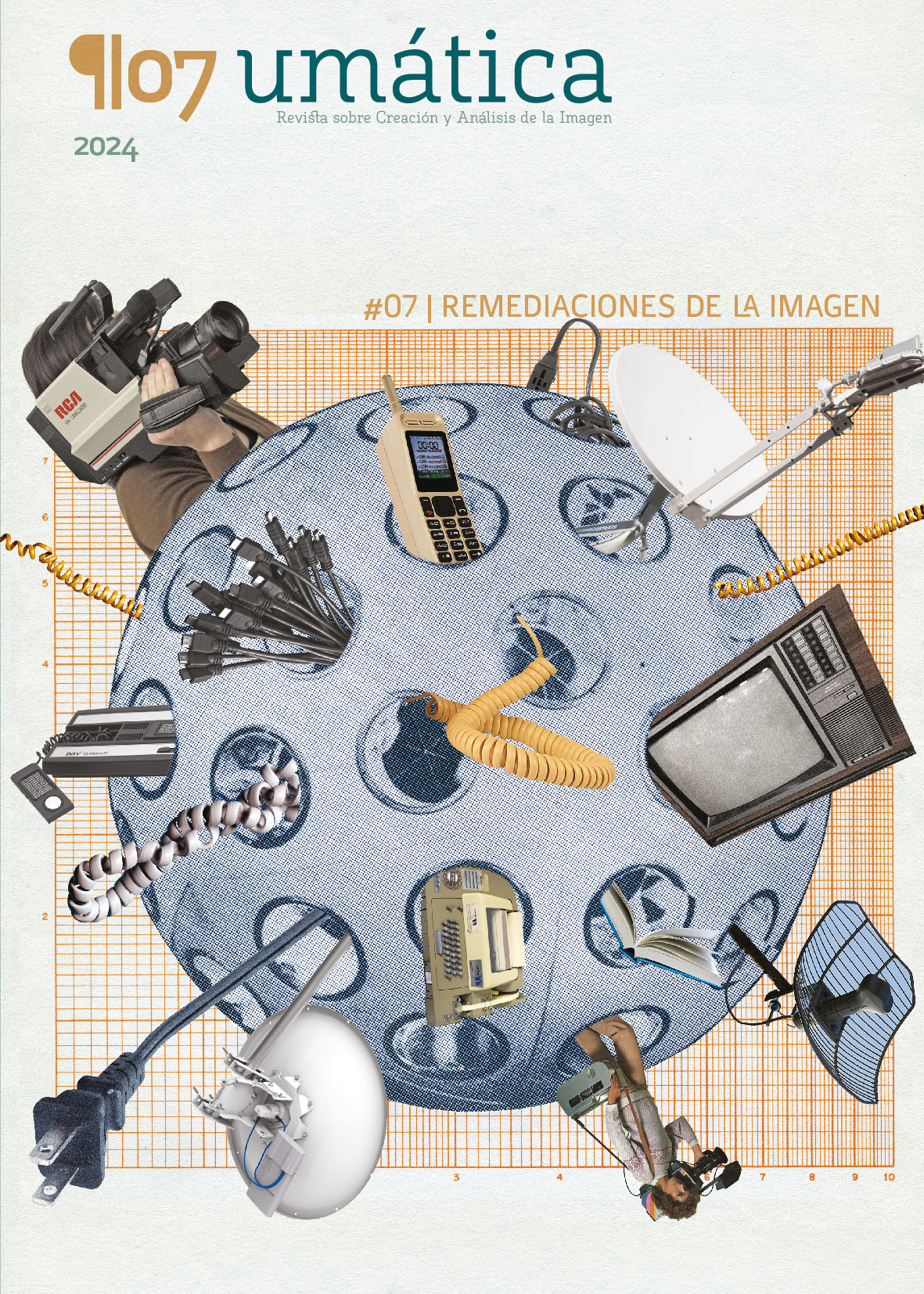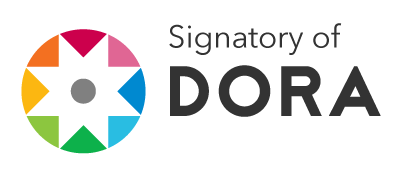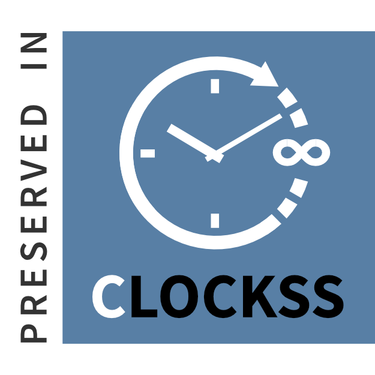Expresión y apreciación artísticas: an Educational Book for Artistic Mediation by Juan Acha
DOI:
https://doi.org/10.24310/umatica.2024.v6i7.20752Keywords:
Juan Acha, educational book, pedagogy, art, MexicoAbstract
This article analyzes the book Expresión y apreciación artísticas, developed by art critic and theorist Juan Acha (1916-1995), in order to identify the strategies of this educational mediation project in Mexico. The structure of the text enunciates, first, Acha’s pedagogical stance to emphasize his commitment to critically study the art system in its totality, from production to distribution and consumption of creative practices. Secondly, it briefly describes the political context in which the book’s design was conceived, under the auspices of the reforms that led Mexico to neoliberal dynamics in all its sectors. Thirdly, it analyzes the structure and visual composition of the educational book to demonstrate the tension between Acha’s critical thinking and the demands of the neoliberal reforms that had to be expressed in school textbooks. As final considerations, it is emphasized that, despite its contradictions with Acha’s more critical and political work, the book constitutes a valuable experiment to approach artistic expression and appreciation from a perspective not exclusive to authorized voices, providing tools for a young and non-specialized public to develop their own sensibility and to appropriate the aesthetic practices of their environment.
Downloads
Metrics
Publication Facts
Reviewer profiles N/A
Author statements
Indexed in
-
—
- Academic society
- N/A
- Publisher
- Universidad de Málaga (España)
References
Acha, J. (1973). La educación artística ¿Se puede enseñar a ser sensible? Diorama Cultural, suplemento periódico Excélsior.
Acha, J. (1984). Por una nueva problemática artística en Latinoamérica. En Ensayos y ponencias latinoamericanistas (pp. 37-43). Galería de Arte Nacional.
Acha, J. (1988). El consumo artístico y sus efectos. Editorial Trillas.
Acha, J. (1994a). Expresión y apreciación artísticas. Artes Plásticas. Editorial Trillas.
Acha, J. (1994b). Las actividades básicas de las artes plásticas. Ediciones Coyoacán.
Acha, J. (1995). El consumo artístico y sus (d)efectos. Conversación con Juan Acha. Humboldt, (112), 88-93. http://inca.net.pe/media/asset/253_Acha_El_consumo_artistico_y_sus_defectos.pdf
Acha, J. (2010a). Educación artística. Escolar y profesional. Editorial Trillas.
Acha, J. (2017). Perú: despertar revolucionario. En J. Barriendos (Ed.), Juan Acha. Despertar revolucionario (pp. 32-40). MUAC, Museo Universitario Arte Contemporáneo.
Acuerdo Nacional para la Modernización de la Educación Básica [ANMEB]. Diario Oficial de la Federación [DOF]. 19 de mayo de 1992 (México).
Alfaro Cuevas, M. E. (2018) Planteamientos teóricos de Juan Acha en la formación profesional de diseñadores en la Escuela de Diseño del INBA. En Coloquio internacional Juan Acha, en el centenario de su nacimiento. Práctica de la imaginación crítica 1916-2016 (pp. 59-64). INBA & CENIDIAP.
Argüello Grunstein, A. (2018). De la estetología y sus descentramientos. Una postura ética y crítica, en resistencia. En Coloquio internacional Juan Acha, en el centenario de su nacimiento. Práctica de la imaginación crítica 1916-2016 (pp. 76-91). INBA & CENIDIAP.
Berger, J., Bloomberg, S., Fox, C., Dibb, M. y Hollis, R. (1974). Modos de ver (J. G. Beramendi, Trad.).
Gustavo Gili.
Buntix, G. (2018). Subdesarrollo y vanguardia. Juan Acha y la crítica de arte en el ocaso del Perú oligárquico (1958-1971). En Coloquio internacional Juan Acha, en el centenario de su nacimiento. Práctica de la imaginación crítica 1916-2016 (pp. 92-140). INBA & CENIDIAP.
Díaz de Cossío, R. (2007). Los libros escolares mexicanos 1959-2006. En Primer Seminario Internacional de Textos Escolares (pp. 56-63). Ministerio de Educación de Chile.
Ejea Mendoza, T. (2009). La liberalización de la política cultural en México: el caso del fomento a la creación artística. Sociológica. 24(71), 17-46.
Freire, P. (2005). Pedagogía de la esperanza. Un reencuentro con la Pedagogía del oprimido. Siglo XXI.
Freire, P. (2007). Pedagogía del oprimido. Siglo XXI.García Canclini, N. (1979). La producción simbólica. Teoría y método en sociología del arte. Siglo XXI editores.
Gutiérrez Chong, A. (2018). El maestro Acha. En Coloquio internacional Juan Acha, en el centenario de su nacimiento. Práctica de la imaginación crítica 1916-2016 (pp. 72-75). INBA & CENIDIAP.
Hernández Navarro, L. (2002, 28 de agosto). Gordillo y Salinas: los vínculos del poder. La Jornada. https://www.jornada.com.mx/2002/08/28/005n1pol.php?printver=0
Livingston, N. (2007). Extender y enriquecer el contenido de los textos de estudio. En Primer Seminario Internacional de Textos Escolares (pp. 209-217). Ministerio de Educación de Chile.
López Domínguez, P. M., Medina López, A., Zapata Garay, N., Redondo González, R. I. (2019). La reforma educativa de Carlos Salinas a Enrique Peña Nieto: una etapa de cambios graduales. Tectzapic. Revista Académico-Científica, 6(1), 56-65.
Ornelas, C. (2009). El sistema educativo mexicano: la transición de fin de siglo. Fondo de Cultura Económica.
Pacto Internacional de Derechos Económicos, Sociales y Culturales [PIDESC]. Organización de Naciones Unidas. 16 de diciembre de 1966.
Programa Nacional para la Modernización Educativa 1990-1994 [PNME]. Diario Oficial de la Federación [DOF]. 29 de enero de 1990 (México).
Read, H. (1977). Arte y sociedad. Ediciones Península.
Roque Rodríguez, C. y Velázquez García, I. (2022). Retos e implicaciones de la política de infraestructura a la inversión mexicana: del cardenismo hacia la alternancia política. Tiempo Económico, XVII(52), 41-60.
Secretaría de Educación Pública [SEP]. (1994). Plan y programas de estudio: Secundaria. SEP.
Tosi, C. (2018). Escritos para enseñar. Los libros de texto en el aula. Paidós.
Vázquez, J. Z. (1997). La modernización educativa (1988-1994). Historia Mexicana, 46(4), 927-952.
Downloads
Published
How to Cite
Issue
Section
License
Copyright (c) 2024 Minerva Salguero Gómez

This work is licensed under a Creative Commons Attribution-NonCommercial-ShareAlike 4.0 International License.
All contens publishes in Umática.Revista sobre Creación y Anáisis de la Imágen are protected under the Creative Commos Attribution-NonComercial-ShareAlike 4.0 International (CC-BY-NC-SA 4.0) license.
All about this license is available in the following link: <http://creativecommons.org/licenses/by-nc-sa/4.0>
Users can copy, use, redistribute, share and exhibit publicly as long as:
- The original source and authorship of the material are cited (Journal, Publisher and URL of the work).
- It is not used for comercial purposes.
- The existence of the license and its especifications are mentioned.
There are two sets of authors’ rights: moral and property rights. Moral rights are perpetual prerogatives, unrenounceable, not-transferable, unalienable, imprescriptible and inembargable. According to authors’ rights legislation, Umática.Revista sobre Creación y Anáisis de la Imágen recognizes and respects authors moral rights, as well as the ownership of property rights, which will be transferred to University of Malaga in open access. The property rights are referred to the benefits that are gained by the use or the dissemination of works. Fotocinema. Umática.Revista sobre Creación y Anáisis de la Imágen is published in an open access form and it is exclusively licenced by any means for doing or authorising distribution, dissemination, reproduction, , adaptation, translation or arrangement of works.
Authors are responsable for obtaining the necessary permission to use copyrighted images.
Copyright note: Authors who have publications with this journal agree and certify to the following terms:
- That he/she has contributed directly to the intellectual content of the work, for which he/she is responsible for all purposes.
- That he/she approves the contents of the manuscript submitted to the editorial process of UMÁTICA, REVISTA SOBRE CREACIÓN Y ANÁLISIS DE LA IMAGEN, and therefore agrees that his/her name appears as the author(s).
- That the content of the article has not been published and that it does not appear in any other work that is about to be published.
- That he/she agrees not to submit it for consideration of another publication while it is in the process of being reviewed by UMÁTICA, REVISTA SOBRE CREACIÓN Y ANÁLISIS DE LA IMAGEN, nor later in case it is accepted for publication.
- That he/she has not had, nor does any personal or financial affiliations that could prejudice the development or results of the present work.
- That all those persons who have made a substantial contribution to the development of the work, having given their permission for the mention, have been mentioned in the acknowledgments section.
- That he/she agrees to provide, when required by the journal, access to all the data and sources on which the work presented is based.
- That he/she will actively participate in the realization of all those stylistic or orthographic-typographic modifications necessary for the publication of the work when notified by the journal's editorial team.
- That he/she has not violated, and nor will, the laws and human or animal rights during the process of research and publication of this work.
- That, none of the institutions in which he/she carries out his/her scientific and research work has presented objections to the publication of the manuscript submitted for evaluation.
- That data and references to materials published are credited and included in the references and citations and, in the cases required, have the due authorizations of those who own the patrimonial rights.
- That any material used is free of copyright. Author(s) is responsible for any litigation or claim related to intellectual property rights, exonerating UMÁTICA, REVISTA SOBRE CREACIÓN Y ANÁLISIS DE LA IMAGEN (UMÁTICA, CREATION AND ANALYSIS OF IMAGE JOURNAL) of any responsibility.
- That in case the work is approved for publication, authorizes the publisher to include the text in the journal UMÁTICA, REVISTA SOBRE CREACIÓN Y ANÁLISIS DE LA IMAGEN and to reproduce, edit, distribute, exhibit and communicate it in the country and abroad by printed, electronic, CD, Internet or any other means known or to be known.







23.png)






